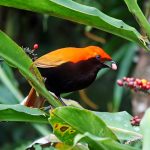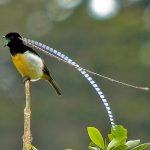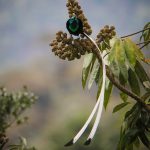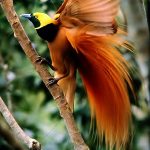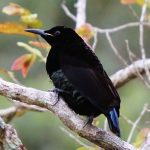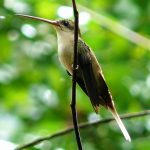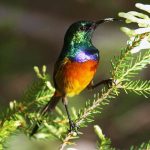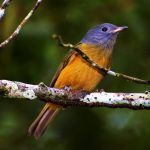King bird-of-paradise

Common name:
They are found in lowland rainforests, gallery forests, forest edges, and disturbed and tall secondary forests, up to an altitude of 950 m.
Diet:
The king bird-of-paradise is polygynous, with solitary or lekking, sedentary, promiscuous adult males dispersed at traditional display tree perches. Breeding takes place in March-October. After copulation the males plays no further role in the nesting and chick rearing process. The female build the nest, an open cup placed in a tree cavity, where she lays 2 eggs. The female incubates the eggs for 17 days and then feeds and broods the chicks until fledging, which takes place 14 days after hatching.
Conservation:
Although the global population size has not been quantified, the species is reported to be common over its large breeding range. Although the species is sometimes sought after by the native men of Papua-New Guinea, who use the plumes of adult males are personal adornment, the hunting pressure represents no threat to populations which is suspected to be stable.

